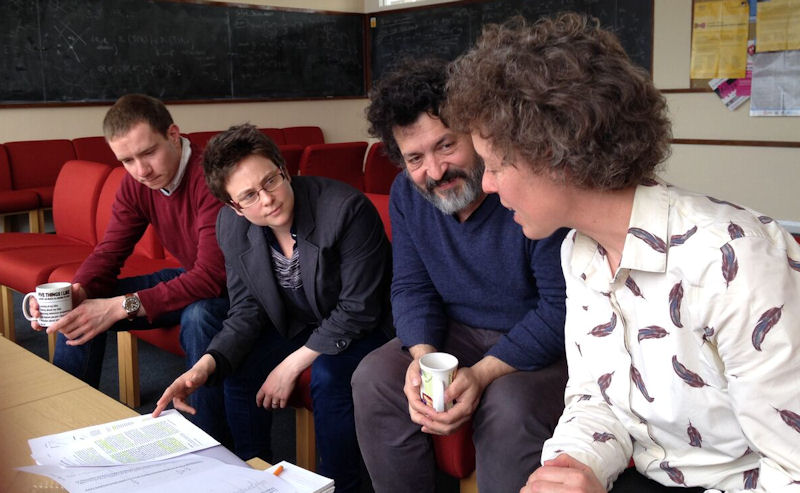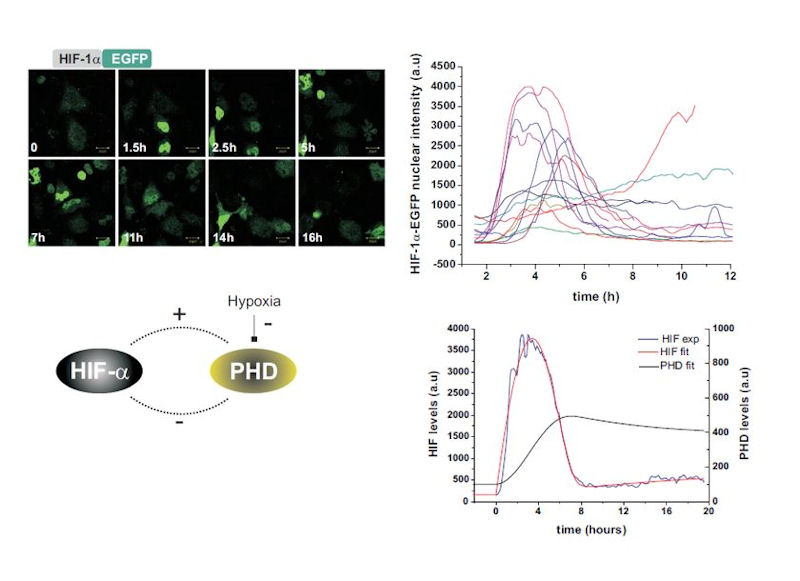April 2015 - Focus on Liverpool’s Mathematical Biology Group

Image 1: (L-R) Doctoral student Joseph Siddons, Emily Howard, and researchers Bakhtier Vasiev and Rachel Bearon
On 16th April 2015, I was delighted to meet with members of Liverpool’s Mathematical Biology Group for a morning of short research presentations followed by a group discussion. Mathematical biology is a progressive research field that focuses on mathematical applications in biological processes. The presentations, delivered by group members , David Lewis, Kieran Sharkey and Bakhtier Vasiev were designed to give me a taste of the kind of research they carry out as mathematical biologists. Are they mathematical biologists? When I asked Rachel Bearon she replied ‘I don’t think of myself as a mathematical biologist – that seems to imply I am more of a biologist than I really am. I would describe myself as an applied mathematician who mostly applies mathematics to biological problems. I bring my mathematical tool kit to biological problems, but the tools are not in themselves limited to biology.’
Perhaps then ‘biological mathematician’ is a more accurate description? But that does sound strange! It is interesting to consider how influential the labels we use actually end up being. Because of the nature of my work I’m increasingly aware of our tendency to personalise when describing the work of artists and to remain impersonal regarding the work of scientists. Of course this supports the traditional public images of the artist and the scientist, but I wonder if it is more fundamental than this? I identify far more strongly with being a composer than with being, say, a researcher in the field of composition although technically I suppose I am both. Perhaps when my work is being directly influenced by mathematics, I’m a mathematical composer? Or a compositional mathematician? Or an applied mathematician working in the field of composition…
The research presentations significantly helped my understanding of the role of the mathematician within these collaborations. To give a brief overview, David Lewis spoke about the dynamics of plankton in the turbulent ocean while Rachel Bearon presented on cell signaling pathways: how complex systems of proteins interact dynamically to determine how cells function (e.g. divide or respond to stimulation), and how these can be described by mathematical equations. Kieran Sharkey told us about his research into epidemics on networks: how the spread of an infectious disease through a population of hosts can be represented by mathematical equations where often the aim is to find functions which forecast how the total number of susceptible/infected individuals will vary over time. Finally, Baktier Vasiev introduced his research into modeling development and aging mathematically in biology, and in particular the development of the chick embryo. Following these presentations we chatted over coffee about interdisciplinary research challenges including the challenge of communication between the often disparate disciplines of mathematics and biology, and the challenge of identifying a shared research vision.
Image 2: A collection of images showing some dynamic data and model fits from Rachel Bearon’s ongoing collaboration with biologist Violaine See
